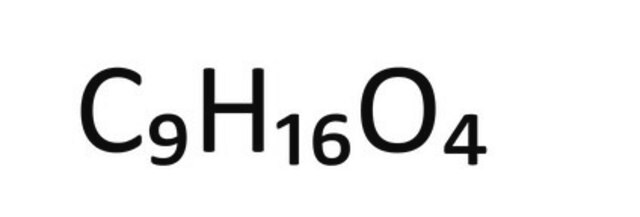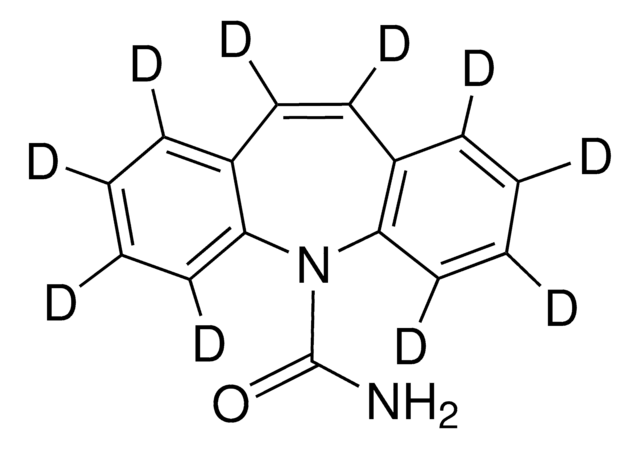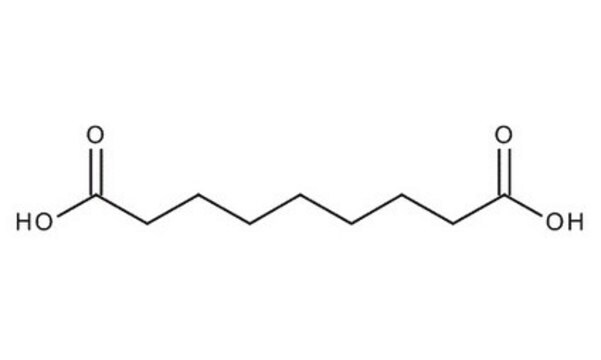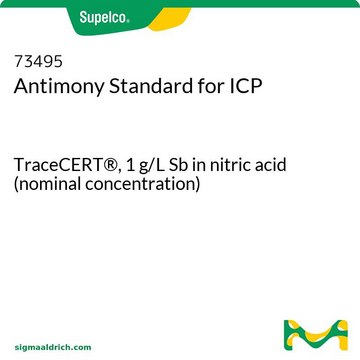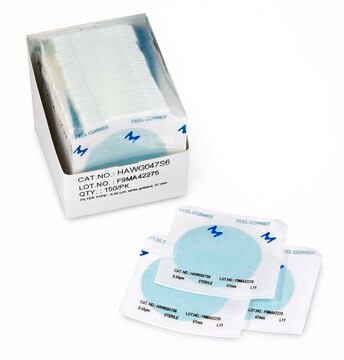11480
Azelaic acid
technical, ~85% (GC)
Synonyme(s) :
Nonanedioic acid
About This Item
Produits recommandés
Densité de vapeur
6.5 (vs air)
Niveau de qualité
Pression de vapeur
<1 mmHg ( 20 °C)
Qualité
technical
Essai
~85% (GC)
pb
286 °C/100 mmHg (lit.)
Pf
109-111 °C (lit.)
Groupe fonctionnel
carboxylic acid
Chaîne SMILES
OC(=O)CCCCCCCC(O)=O
InChI
1S/C9H16O4/c10-8(11)6-4-2-1-3-5-7-9(12)13/h1-7H2,(H,10,11)(H,12,13)
Clé InChI
BDJRBEYXGGNYIS-UHFFFAOYSA-N
Vous recherchez des produits similaires ? Visite Guide de comparaison des produits
Catégories apparentées
Description générale
Application
- A phase 3 randomized, double-blind, vehicle-controlled trial of azelaic acid foam 15% in the treatment of papulopustular rosacea: This study evaluates the efficacy and safety of a 15% azelaic acid foam in treating rosacea, demonstrating significant improvements in disease severity (Draelos et al., 2015).
- Comparison of the characteristics of transfersomes and protransfersomes containing azelaic acid: This research compares the properties of transfersome formulations with azelaic acid, highlighting their potential for enhanced delivery in dermatological applications (Rahmi and Pangesti, 2018).
- Enhancing the bioconversion of azelaic acid to its derivatives by response surface methodology: This article discusses optimizing the production of azelaic acid derivatives, which are crucial for cosmetic and pharmaceutical applications (Khairudin et al., 2018).
- Azelaic acid: a bio-based building block for biodegradable polymers: The study explores azelaic acid as a sustainable precursor for producing biodegradable polymers, pertinent to material science (Todea et al., 2021).
- Preparation and evaluation of azelaic acid topical microemulsion formulation: in vitro and in vivo study: This research presents a microemulsion formulation of azelaic acid, assessing its stability and skin permeability, critical for topical therapeutic applications (Hung et al., 2021).
Actions biochimiques/physiologiques
Mention d'avertissement
Warning
Mentions de danger
Conseils de prudence
Classification des risques
Eye Irrit. 2 - Skin Irrit. 2
Code de la classe de stockage
11 - Combustible Solids
Classe de danger pour l'eau (WGK)
WGK 1
Point d'éclair (°F)
410.0 °F - closed cup
Point d'éclair (°C)
210 °C - closed cup
Équipement de protection individuelle
Eyeshields, Gloves, type N95 (US)
Faites votre choix parmi les versions les plus récentes :
Déjà en possession de ce produit ?
Retrouvez la documentation relative aux produits que vous avez récemment achetés dans la Bibliothèque de documents.
Les clients ont également consulté
Notre équipe de scientifiques dispose d'une expérience dans tous les secteurs de la recherche, notamment en sciences de la vie, science des matériaux, synthèse chimique, chromatographie, analyse et dans de nombreux autres domaines..
Contacter notre Service technique
